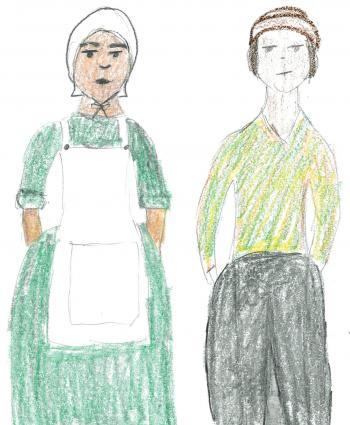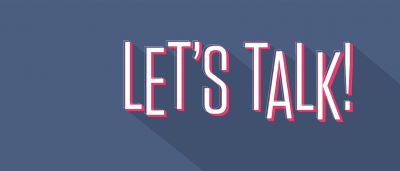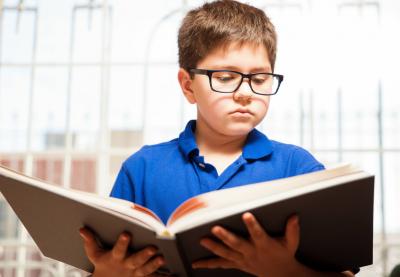
All you need to do is scroll through your students’ Twitter, Facebook or YikYak newsfeeds to see they are talking about topics many teachers hesitate to discuss in the classroom. Hashtags enable youth to quickly cross reference stories, blogs, pictures, memes and other digital media with ease, exposing them to a universe of social justice issues (interpreted from a variety of perspectives) that may or may not directly influence their lives.
Many of the issues at the core of these social media conversations (and sometime battles) are strongly connected to civic competencies. So why don’t more teachers engage students around the very topics that keep them tethered to their mobile devices?
One reason: Because with all its potency as an originator, disseminator and connector of knowledge and information, social media also serves as a polarizing force. Users block information they don’t agree with or, worse, participate in snarky exchanges that do nothing more than entrench camps and increase hostility.
Teachers are not immune to this reality. Many have largely remained “users” who unfollow or ignore discussions about racism, sexism, heterosexism, ethnocentrism, xenophobia and institutional oppressions when they appear on social media. There are good reasons to do this; if a post is intended to antagonize, unfollowing it might be an act of self care. But there is also rich dialogue to be found when users pursue more meaningful conversations on social media.
As researchers, we have asked why educators choose not to address contemporary social justice topics as an opportunity to foster critical historical thinking in their students, and we’ve consistently stumbled over the same response: Teachers are afraid of where the conversation might go and feel ill-equipped to scaffold it constructively.
This invites a secondary question: How can we better prepare teachers to connect historical thinking to contemporary thinking and ground both in an understanding of how identity influences interpretation?
Critical Historical Thinking
To examine this question, it helps to go back to research we did on how to build critical historical thinking. Critical historical thinking is a dynamic, reflective process that asks thinkers to interpret and understand persistent historical themes. They do so by drawing on connections to contemporary events (such as one might be invited to engage via social media) and acknowledging that interpretation and understanding of the past and the present is shaped by privileged or marginalized aspects of their identities.
We did this by studying how the identities of the participants influenced their interpretations of historical themes, people and events. We found that their interpretations were not neutral, but were, in fact, rendered through the lenses and identities of the individuals.
Our original research methodology, adapted from the article “Picturing the Past: Gender Differences in the Depiction of Historical Figures” by Janice Fournier and Samuel Wineburg, can be used in history classrooms to support students’ understanding of how their historical thinking is shaped by their multiple identities.
In their original study, Fournier and Wineburg asked elementary school children to draw the following historical figures: pilgrim, hippie and western settler. The drawings were analyzed to determine whether kids gendered the pictures to align with their own gender identity. They found that the drawings of pilgrims and hippies matched the artists’ gender identities, but that girls tended not to draw western settlers as female.
To what extent does race shape historical thinking? What other historical figures support dominant cultural narratives around gender and race?
Their work made us ask: To what extent does race shape historical thinking? What other historical figures support dominant cultural narratives around gender and race?
We decided the best way to find out was to provide additional drawing prompts and a comprehensive assortment of crayons to see what colors participants chose or didn’t choose. We retained pilgrim and western settler, removed hippie, and added immigrant and activist as prompts. And we decided to do this with a focus group of pre-service social science teachers.
The drawings revealed some interesting patterns. Men tended to draw men, but women didn’t always draw women, even though women could clearly represent the prompt. Activists were consistently drawn as people of color, by men and women of all races. Immigrants were also drawn as people of color, specifically people emigrating from Mexico.
Once the drawings were complete, the focus group analyzed their choices, allowing the experience to serve as an opportunity for critical dialogue, growth and awareness.
A Multicultural Competency
The study made it clear that historical figures that should be considered “neutral” in terms of gender and race are perceived in decidedly non-neutral ways. To us, these findings support the argument that teacher education programs must view critical historical thinking as a multicultural competence with contemporary applications. To overlook it is to undermine a fundamental tenet of social justice teaching: Who we are influences how we see others.
At the conclusion of the study, we decided that—in the hands of a skilled teacher—this activity could make a great instructional strategy for fostering critical historical thinking and critical thinking about contemporary social justice issues. (It is imperative that teachers have a firm understanding of their own identities before leading students to engage their own. It is also important that teachers provide a framework for discussion and have fostered a supportive climate in which to have difficult conversations prior to embarking on this activity.)
For high-schoolers, the activity could look something like this:
1. Give each student blank paper and crayons in a wide assortment of colors.
2. Without providing any context, ask students to draw the following: pilgrim, western settler, immigrant and activist. Students should draw their pictures independently from their classmates.
3. After everyone completes the drawing, collect them and break the class into four groups. Ask each group to analyze their drawings and discuss their answers to the following questions:
- Did everyone draw the prompt with the same gender expression?
- If yes, what gender expression did everyone select?
- If no, which figures were drawn in a gender different from the artist’s gender expression?
- Did everyone draw the prompt as the same race?
- If no, how did you determine that the races were different?
- If yes, how did you determine that the races were the same?
- Is the race represented similarly to or differently from that of the artist?
4. Ask each group to present a summary of their answers. Students can compare their group’s drawings and summaries to the drawings and summaries of other assigned groups.
5. Lead the whole class in a critical discussion about how current perceptions of race and gender influence our perceptions of history.
- How is power related to perceptions of race? Gender?
- What is a social construct?
- How are race and gender socially constructed?
- How has race served to oppress some and privilege others?
- How has gender served to oppress some and privilege others?
- How do privilege and oppression influence the way we engage historical texts?
- What is a narrative?
- How can critical historical thinking help us to understand how power influences political, social and historical narratives?
Consider following up this activity with another critical discussion that ties in their experiences with social media.
- How do privilege and oppression influence the way we engage social media?
- How do political, social and historical narratives inform how we value and make meaning of the world we live in today?
- How do political, social and historical narratives inform our engagement with social media?
- How can critical historical thinking help us to interpret our online interactions?
By engaging these questions, students can deepen their understanding of how our identities shape the way we view historical people and events and how we perceive contemporary social justice issues. They will also deepen their understanding of race and gender as social and political constructs. By adding more prompts and questions over time, teachers can also help students examine the ways ethnicity, social class, sexual orientation, religion and other identity characteristics influence their experience of daily life—whether online or not.
As the United States becomes increasingly diverse and social media dramatically changes the ways we relate to one another, it is imperative that we provide learning opportunities that develop the kinds of multicultural civic competencies this activity fosters. By having these conversations in the classroom, educators can provide the critical literacy skills and multicultural competencies students need to navigate and filter through hashtags, propaganda and polemics. We need critical historical thinking in schools if we want to support social justice in an expansive world encountered largely as blog posts, soundbites and memes. Retreating from, unfollowing or blocking conversations we don’t agree with or that don’t seem immediately relevant to our lives removes us from experiences we can share with our students. By staying engaged, we can help them become wiser consumers of social media and find spaces where our voices can help move the conversation forward.

Get the support you need to engage in conversations about power and privilege with Let’s Talk! Discussing Race, Racism and Other Difficult Topics With Students.
